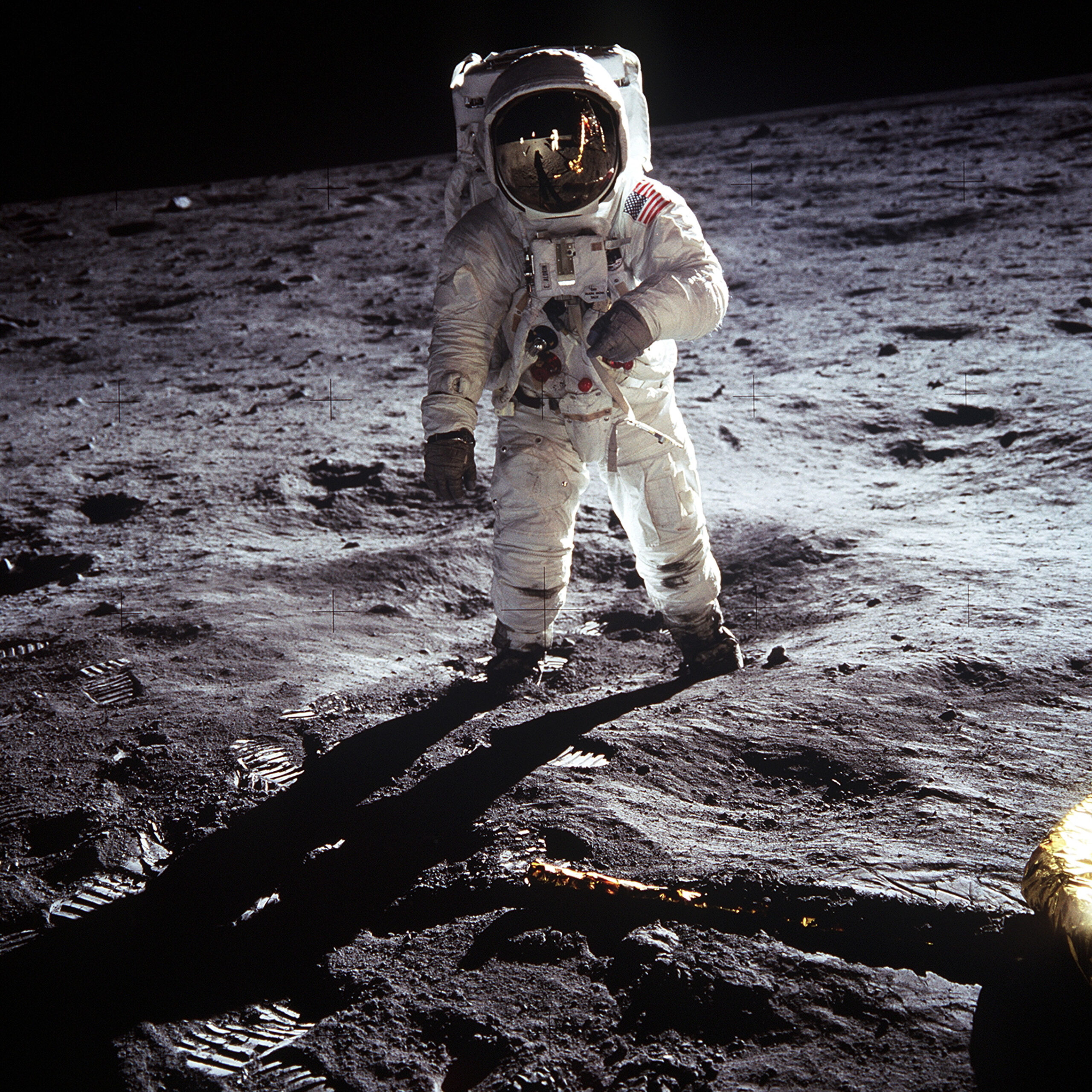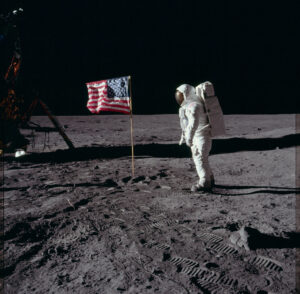3, 2, 1, Blast off! Get ready to discover how one Connecticut company helped American astronauts take their first steps on the moon.

Astronaut Edwin “Buzz” Aldrin walks on the surface of the moon, July 20, 1969. photo: Neil Armstrong, NASA
What to Wear in Space
Here in Connecticut, we know what it’s like to deal with big temperature changes. Just imagine: in 1943, in Falls Village, the temperature dropped to an icy –32 degrees. Brrr! But in 1995, Danbury roasted at a temperature of +106 degrees, according to the National Centers for Environmental Information (2023). Talk about extremes! But we’ve figured out how to stay comfortable by changing our clothes to fit the weather.
In space, the temperature range is truly out of this world. On a spacewalk, an astronaut might face a bone-chilling –250 degrees or a scorching +250 degrees (NASA, 2019)! To brave these wild temperatures, astronauts wear special suits whenever they are outside their spacecraft. These suits shield them from extreme temperatures and radiation. They help them breathe. They even let them talk to their spacecraft.

Astronaut Edwin “Buzz” Aldrin poses with the American flag on the moon’s surface, July 20, 1969. photo: Neil Armstrong, NASA
On July 20, 1969, astronauts Neil Armstrong and Buzz Aldrin made history by becoming the first people to walk on the moon. A Connecticut company, Hamilton Standard, helped design the suits they wore on their legendary spacewalk. The suit’s backpack, or Portable Life Support System (PLSS), helped protect the astronauts. The PLSS pumped fresh air into their helmets. It kept them cool when temperatures soared. It helped them communicate. It even got rid of the carbon dioxide they exhaled. Now that’s a space-age backpack!
As the space program changed, Hamilton Standard updated its designs. NASA astronauts continued to wear their PLSS backpacks until the end of the Space Shuttle program in 2011. Thanks to Hamilton Standard, astronauts could explore the moon’s surface for the first time. These suits helped scientists unlock the mysteries of the moon and outer space. This Connecticut company helped turn space exploration from a dream into a reality.
Explore!
Visit the New England Air Museum in Windsor Locks to learn more about Connecticut’s contributions to aviation and the space program: neam.org.
Learn More!
From the Wiffle ball to Igor Sikorsky’s helicopter, Connecticut has been home to the development of many flying objects. Read about other CT inventions and innovations at whereilivect.org/economy/.
